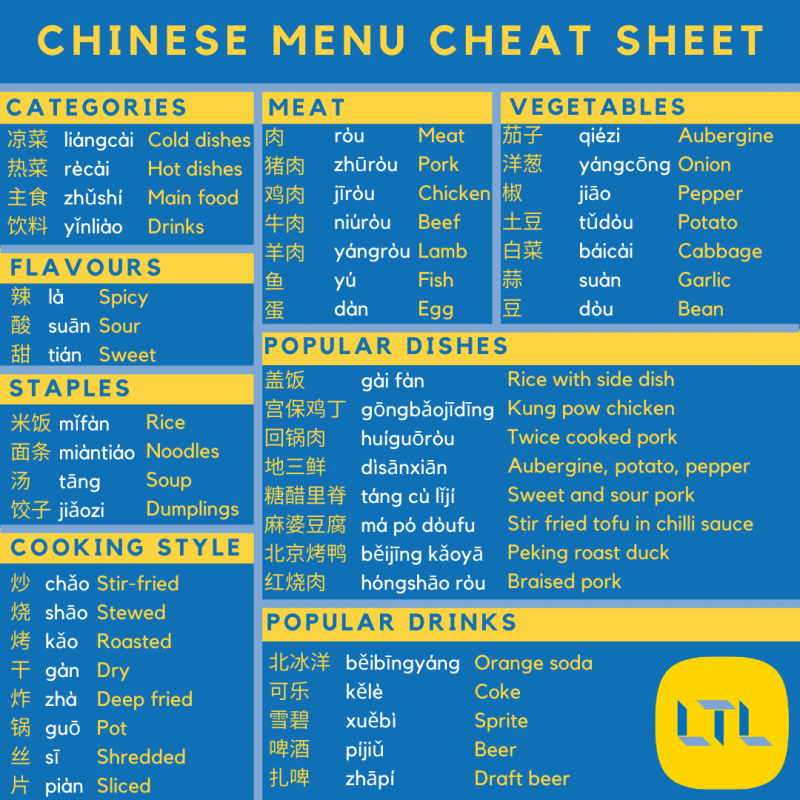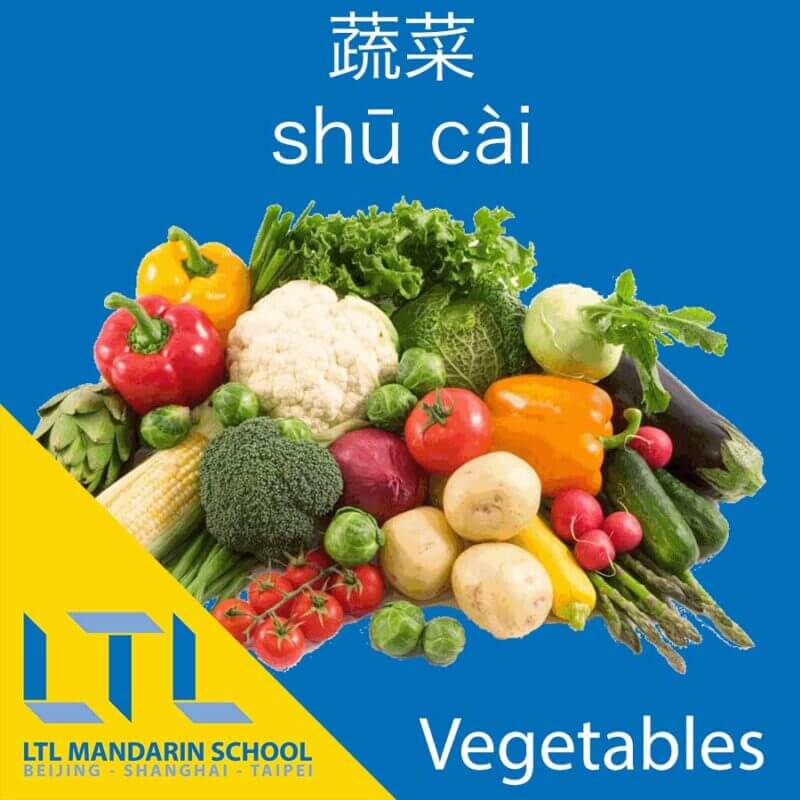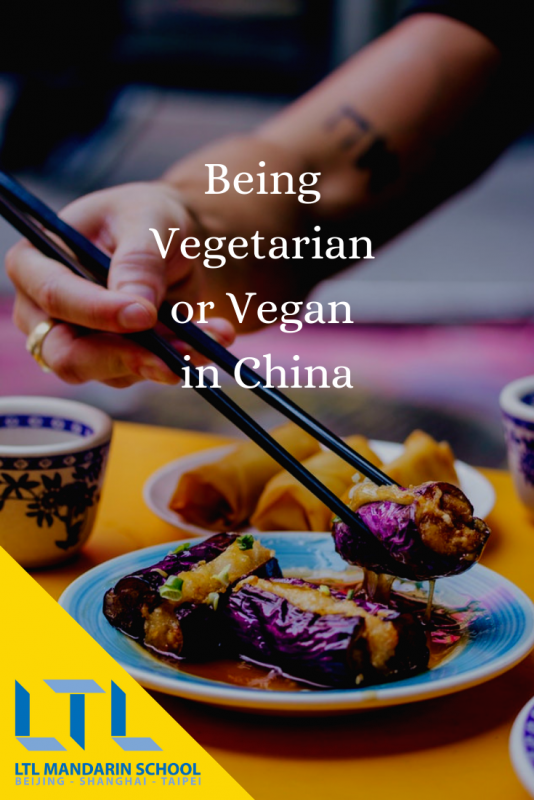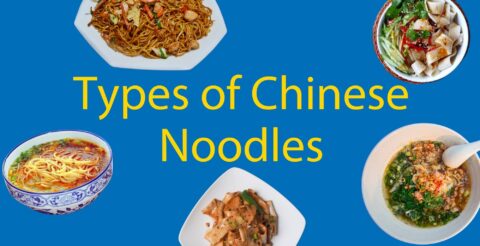Become an Expert on How to Read Chinese Menus
Eating at a Chinese restaurant can be an exciting and delicious experience, but if you can’t read Chinese characters, the menu can seem overwhelming.
However, with a few tips and tricks, you can decode a Chinese menu like a pro and order with confidence.
Chinese cuisine is definitely not something you want to miss out on and in this blog post we’re going to guide you through everything you need to know when reading a Chinese menu!
Chinese Menu || Utilise Pictures
Chinese Menu || Check the Prices
Chinese Menu || Find the Basic Characters
Chinese Menu || Food Restrictions?
Chinese Menu || Recommendations
Chinese Menu || Time to Order
Chinese Menu || FAQs
Have you ever run into this situation?
You sit down in a restaurant, you’re handed a menu, and everything is Chinese! Not a word of English to be found. Granted, this is more likely to happen while eating at smaller, local restaurants (which also happen to have some of the cheapest and most delicious foods!)
Well fear no more – we are here to help with our complete guide on reading Chinese menus… and to show you we are serious, here is an ultimate cheat sheet to get you going.
Download it, save it, use it!

If you’re a beginner Chinese student, a Chinese food menu can be extremely intimidating. They probably look nothing like what you’ve seen in your beginner textbooks!
Fortunately, you don’t need to be able to read every single character on the menu to order something you like.
In this blog, I’ll teach you some of the basics of reading a Chinese menu. These tips should help you make educated guesses about what you order, so you’ll be sure to end up with something that suits you!
How to Read a Chinese Menu || Find a Picture Menu
This is one of the most basic tips, but if you’re at a total loss, try to find a restaurant that has Chinese menus with pictures!
Of course, not every restaurant has this, but pictures can be super helpful.
Additionally, check to see if your restaurant has QR code you can scan and order from.
In my experience, lots of restaurants have this kind of code. You can scan from WeChat or Alipay, and then order and pay on your phone. Even if you don’t have an online wallet set up, you can still scan just to see the menu.
Not only is it super quick and convenient, these types of order forms generally have pictures!
So you can choose your food based on looks instead of characters.
This can take a lot of pressure off you, especially if you can’t communicate with the waiter or waitress very well.
If you’re ever ordering food for delivery, through Meituan (美团) or Eleme (饿了么), menus online also generally have pictures.
BONUS – Alipay is a life saver for foreigners in China because it means you can benefit from all the cashless things here like coffee at Luckin’ and the aforementioned Meituan. It can be linked to your foreign bankcard using the steps in this video.
How to Read a Chinese Menu || Check Prices
Another basic tip is to scan the prices on the menu quickly.
This can be helpful if you’re a beginner and have no clue what anything on the menu means (except the numbers!)
The prices can clue you into the size of dish.
For example, don’t choose something that’s only 2 RMB from a menu where there’s a whole list of dishes for 20-30 RMB.
How to Read a Chinese Menu || Find the Basic/Comfort Characters
Let’s talk about some of the most basic food characters, these are the ones you’ll find on almost any menu.
Unlike English (where you wouldn’t be able to read a menu without knowing the specific names for each type of food), a lot of food groups share the same character, which means that you don’t need to learn every ingredient to decide on a dish.
Just recognizing these few main characters can help you narrow down your options considerably.
For example if you like noodles, you need to be looking for 面 or 面条. If you dislike egg, avoid anything with 鸡蛋. This can be a big help in narrowing the options down.
面条 (miàntiáo): noodles
You’re actually more likely to just find the character 面 (miàn) at the end of the dish’s name.
This character, along with 饭 (fàn, next up!) is probably the one you’ll find the most often on a menu.
It’s also one of your most basic choices. Here in Shanghai, noodles or rice are served with almost every dish.
米饭 (mǐfàn): rice
Similarly with noodles, you’ll probably find the single character 饭 (fàn) at the end of the dish’s name to show that the dish is served with rice.
菜 (cài): dish OR vegetable

SPOILER – This character has more than one meaning.
On a menu, it will probably be used in the name of dish to mean vegetable, for example “四川泡菜” (sìchuān pàocài, which means Sichuan pickled vegetables).
You might also find this character used in headings such as:
- 凉菜 (liángcài, cold dishes)
- 热菜 (rècài, hot dishes)
青菜 (qīngcài) / 蔬菜 (shūcài): vegetable
These characters more specifically mean vegetables (not “dish”), but you’re not as likely to find these on a menu, just as you’d be more likely to find the word “broccoli” than “vegetable” on an English menu.
Instead, this could be helpful if you’re asking for a vegetable dish!
BONUS – Not so sure on your Vegetables in Chinese yet, let us help you out with a super quick, super helpful tutorial.
肉 (ròu): meat
More specifically, you might find these characters on a menu:
- 猪肉 (zhūròu, pork)
- 牛肉 (niúròu, beef)
- 羊肉 (yángròu, lamb)
- 鸡肉 (jīròu, chicken)
This is especially useful if you specifically want to order a certain type of meat, or if you’re a vegetarian (like me!) and you want to avoid these!
鱼 (yú): fish
This one goes along with meat, and I’ve added it in because I know that fish can be a bit polarizing (some love it, some hate it)!
So now you can recognize it whether you’re craving or avoiding fish.
汤 (tāng): soup
Soups are often an important part of Chinese cuisine, so you’re likely to run across this character on a menu.
饮料 (yǐnliào): drinks
This often refers specifically to soft drinks.
You can find this on a menu as one of the headings, which can help you categorize the menu options. This is can help you feel a little less overwhelmed!
鸡蛋 (jīdàn): egg
Specifically chicken eggs! Eggs are commonly used, so you’ll find them on a lot of menus.
豆腐 (dòufu): tofu
While tofu is seen as more of a vegetarian option in America, Chinese cuisine utilizes tofu in many different ways, even incorporating them in dishes with meat.
As a vegetarian, knowing these characters was especially helpful.
BONUS – If you are walking along the street and see the characters 臭豆腐 (chòu dòufu), RUN FOR YOUR LIFE!
This is Stinky Tofu and often gives off a rather pungent smell that most westerners struggle to deal with.
炒 (chǎo): fried
This doesn’t mean deep-fried, just fried shallowly in oil.
This character is often combined with others, such as
- 炒饭 (chǎofàn, fried rice)
- 炒面 (chǎomiàn, fried noodles, or “chao mein” as you might see it in some Westernized Chinese restaurants)
- 炒蛋 (chǎo dàn, scrambled eggs, not fried eggs like you might think).
主食 (zhǔshí): main food
This usually includes rice or noodles.
These characters will show up as a heading on a menu, you can use them as a helpful guide for choosing a filling dish, as opposed to a small side dish.
How to Read a Chinese Menu || Food Restrictions
Sometimes reading the menu is more important than just getting a dish you prefer.
If you have any sort of food restriction or allergy, being able to pick something suitable from the menu is essential.
I’m vegetarian myself, and I also went a period of time being gluten-free. Here are some of the characters I’ve found most useful (and then some)!
过敏 (guòmǐn): allergy
Although you won’t find this on a menu, you can use this word when ordering.
If you have an allergy, you can tell the waiter or waitress, “我对______ 过敏” (wǒ duì _____ guòmǐn), meaning “I’m allergic to ______” and just fill in the blank.
For example, “我对花生过敏” (wǒ duì huāshēng guòmǐn), meaning “I’m allergic to peanuts.“
素 (sù): vegetable/vegetarian
Again, you may not find this on a Chinese menu, but it’s something you can ask the waiter or waitress.
If the menu is overwhelming and you want to know if the restaurant serves anything vegetarian, we have a hack.
You can ask the restaurant staff “这里有没有素的菜? (zhè li yǒu méi yǒu sù de cài?).
This means “is there vegetarian food here?”
Alternatively, you can ask if a dish has meat in it (something I ask on a regular basis!)
You can ask “这个菜有没有肉?” (zhège cài yǒu méi yǒu ròu?), which means “does this dish have meat in it?”
小麦 (xiǎomài) / 面粉 (miànfěn): wheat/flour
When I went gluten-free for a while, I used these characters to help me.
Gluten-free diets aren’t very common in China, so if I wanted to know if something was gluten free, I asked “这个用面粉/小麦做的吗?” (Zhège yòng xiǎomài/miànfěn zuò de ma?), meaning “Is this made with flour/wheat?”
小麦 (xiǎomài) and 面粉 (miànfěn) are good to know, especially if you buy a pre-packaged food with ingredients listed on the back.
As a tip, if you are very strict about eating gluten free, pretty much all soy sauce is made with wheat, and soy sauce is in a lot of dishes. So make sure your dishes don’t have soy sauce in them!
BONUS – Soy Sauce in Chinese is 酱油 jiàng yóu
花生 (huāshēng): peanut
Peanuts are sometimes served in Chinese restaurants as a side dish.
This word is important to know if you have a peanut allergy and need to avoid them.
Asking for Recommendations
If worst comes to worst, and you find that the menu is giving you a headache or you simply don’t have time to make a decision, you can always ask the waiter or waitress what they recommend!
I’ve done this plenty of times, and they are always willing to recommend something to me, especially the restaurant’s 招牌菜 (zhāopái cài, signature dish).
This can be particularly helpful if you have a food restriction.
This way, the waiter or waitress can pick something out for you, instead of you trying to scan the menu yourself.
BONUS – If you want to ask for a recommendation, you can say “你推荐什么菜?” (nǐ tuījiàn shénme cài?), which means, “what dish do you recommend?”
Time to Order!
When it comes to ordering, the most basic way to order is simply by pointing, if you don’t know how to say anything.
If you want to flex a little Chinese, you can say “我要一个这个” (wǒ yào yīgè zhège), meaning “I want one of this”.
It’s easy to learn and useful on a daily basis.
BONUS – If you want to see advanced and basic Chinese working, in action, check out Max, Alice and Campbell perfectly ordering their Subway sandwiches below. Whilst Max and Alice go all about their their Chinese, Campbell has a hack, and orders his Subway with just one Chinese word – 这个!
Wrapping things up…
Those are my biggest tips for reading a Chinese menu (and ordering) when you’re a beginner.
Hopefully some of these were helpful or reassuring (if you’re planning on coming to China sometime soon)!
If you’ve been studying Chinese for a while, did I miss any important characters? What other tips do you have for reading Chinese menus? Leave them in the comments below!
If you enjoy this kind of content why not also check out our guide on learning how to read a Korean menu and how to order in Spanish as well!
How to Read Chinese Menus || FAQs
How do you say Menu in Chinese?
Menu in Chinese is 菜单 càidān.
How do you say “I am allergic to…” in Chinese?
You should tell the waiter or waitress – “我对______ 过敏” (wǒ duì _____ guòmǐn)
You just need to add in your allergy where the space is. So for example, if you are allergic to peanuts. You would say “我对花生过敏” (wǒ duì huāshēng guòmǐn).
How do you say “Does this dish have meat” in Chinese?
You should ask the waiter or waitress – “这个菜有没有肉?” zhège cài yǒu méi yǒu ròu?
How do you say Rice in Chinese?
Rice in Chinese is 米饭 (mǐfàn).
How do you say Noodles in Chinese?
Noodles in Chinese is 面条 (miàntiáo) but commonly you’ll just see and use 面 (miàn).
What is the Chinese character for meat?
The Chinese character for meat is 肉 and is pronounced ròu.
Want more from LTL?
If you wish to hear more from LTL Mandarin School why not join our mailing list?
We give plenty of handy information on learning Chinese, useful apps to learn the language and everything going on at our LTL schools.
Sign up below and become part of our ever-growing community.
BONUS | Learn Chinese with LTL in person. Our student community is growing by the week.


 Hi, my name is Ilaria! I am from Italy and I am a Student Advisor at LTL. Fancy coming to study with us in China? Drop me a message.
Hi, my name is Ilaria! I am from Italy and I am a Student Advisor at LTL. Fancy coming to study with us in China? Drop me a message.






15 comments
[…] in literal terms, are quite different for this proverb. In Chinese 一口 means one mouthful, 吃 (chī) eat, 不成 (bùchéng) impossible, and 胖子 (pàngzi) means a fat person (fatty). Altogether, […]
[…] Menu, please: 请给我菜单 – qǐng gěi wǒ cài dān […]
[…] On the menu are French classics such as Duck Confit and Foie Gras. […]
[…] there would be no other foreigners to turn to when I was struggling to order food in a restaurant, where I would be placed completely out of my comfort zone and thrown into the deep end in terms of […]
[…] menu with all kinds of dishes, such as old Beijing style tofu, savoury pancakes, steamed buns with […]
[…] looking for e.g. noodles (面条 miàntiáo) then it may be useful to learn some basic Chinese characters found in menus. This will enable you to search directly for what you […]
[…] lovely Manchurian restaurant offers amazing Manchu cuisine in a nice, relaxed atmosphere. If the Chinese menu looks intimidating, don’t worry the also have an English one […]
[…] lovely Manchurian restaurant offers amazing Manchu cuisine in a nice, relaxed atmosphere. If the Chinese menu looks intimidating, don’t worry the also have an English one […]
I appreciated that you mentioned that you do not need to know all the characters that are found on the menu to be able to order something. My sister told me that she would love to take me to a Chinese restaurant when she is in town, so I am looking and weighing our options.
We are hoping that we will find a place where we will feel comfortable ordering and we will be able to figure out exactly what we like.
Hi Faylinn,
Yes you can get a good grasp of a menu by just know some key characters, but of the course the more you know, the easy the puzzle becomes!
Good luck and don't forget to download or screenshot our cheatsheet above!
LTL Team
[…] sure to have a look at guide to reading a Chinese menu, for more tips on ordering food at restaurants. We also have a hand menu cheat sheet, which you can […]
[…] and guess what, it’s all cashless. You don’t need to know any Chinese either. So what’s on the menu at […]
[…] who has been in China or to a Chinese restaurant during the Spring Festival period will have seen some New Year decorations. They traditionally […]
[…] many among us. Although a Western drink, mulled wine has become a popular winter addition to many drinks menus all over […]
ZhSnap can help you accurately translate the Chinese food menu.